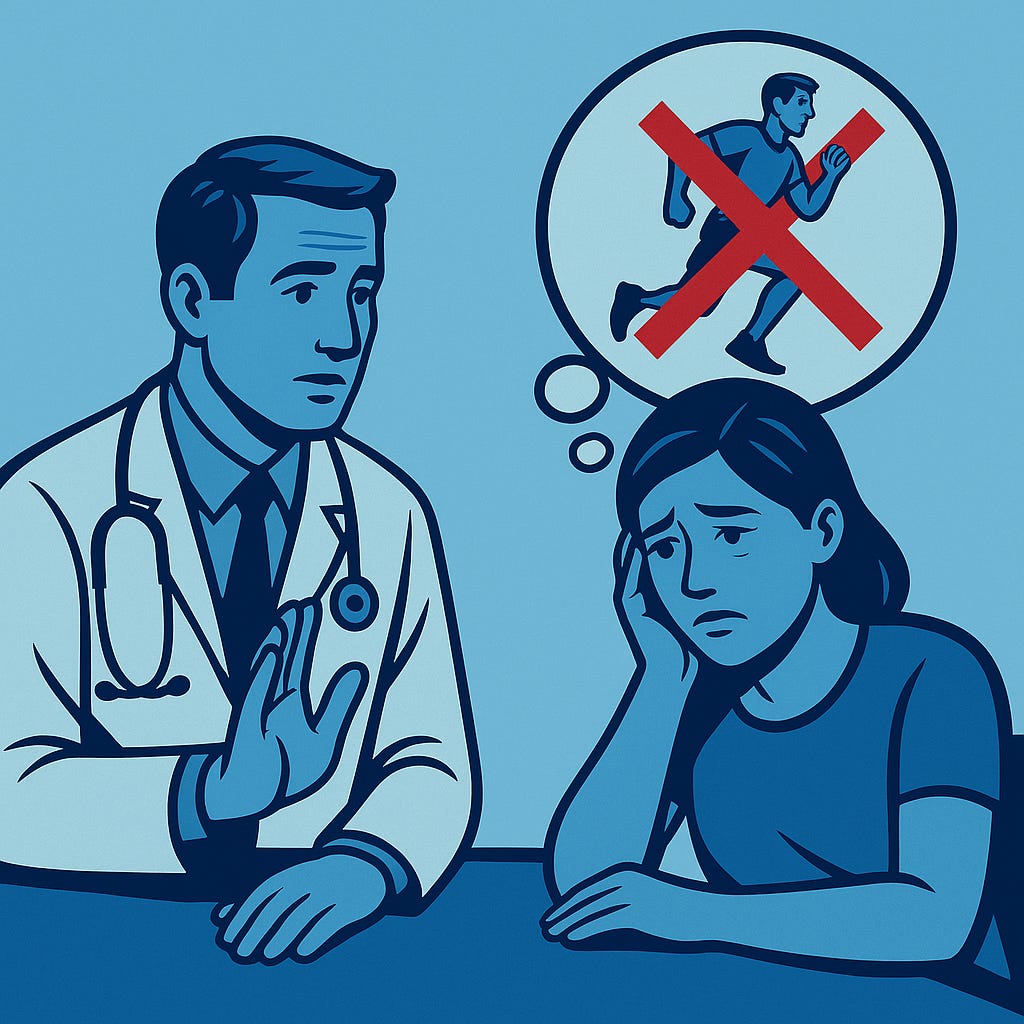Summary:
The words we use to describe arthritis and joint pain influence how people perceive their bodies.
Those beliefs influence whether they keep moving, avoid activity, or assume surgery is inevitable.
A new study reveals how specific labels — such as “degeneration,” “wear and tear,” and “persistent pain”-can instill fear, lead to inactivity, or foster resignation.
ICYMI:
Last week’s most popular post was about what happens to our bodies when we walk 30 minutes a day, along with a timeline for those changes.
Chapter 10 of You’re Not Broken, Thriving With Knee Osteoarthritis covered osteoarthritis and running… no, most of you don’t need to stop running.
For decades, I have struggled to explain to patients why their joints hurt, despite X-rays showing evidence of osteoarthritis or thinning cartilage.
Why?
Because I know that the perfect description doesn’t exist. Early on in my career, I noticed that many of you adjusted your activities based on your own interpretations of the words I used to describe the cause of your joint pain.
Eventually, I would use whatever terms I chose to describe the changes I saw, but I then took a long while to try to anchor the belief that this didn’t mean your active life was over. Quite the contrary.
People who stay active and strong keep their natural joints the longest.
I’ve said it for over a decade, and I wrote about it at length in my book on Knee Osteoarthritis: our words matter. They can harm. They can shape people's perceptions of their bodies. And those beliefs change how they move… or don’t move.
A new study on hip pain reinforces this point. Researchers tested different diagnostic labels: hip osteoarthritis, hip degeneration, and persistent hip pain. What they found is interesting and confirmed my observations from 30 years of practicing medicine:
When people heard “degeneration” or “wear and tear,” they imagined their joints crumbling. Exercise felt dangerous. Surgery felt inevitable.
“Osteoarthritis” was viewed as a more legitimate diagnosis, but many still assumed the joint was doomed to decline.
“Persistent hip pain” was less threatening, but often dismissed as vague or not “medical” enough.
In every case, the label shaped beliefs. Some people limited their activity out of fear. Others assumed their only path was the operating room.
This matters because we know that exercise is the single most powerful tool for preserving function in osteoarthritis. But if the words we use convince people that exercise is unsafe, we take away the very thing that can help them most.
That’s why I believe we need to reframe how we talk about osteoarthritis.
Not as joints that are “worn out,” but as joints that are still capable of adapting.
Not as a one-way road to surgery, but as a condition where movement is treatment.
Not as a life sentence, but as a challenge that can be managed and often improved.
Thus, the reason I wrote a book on Knee Osteoarthritis and chose the title 'You’re Not Broken'... I publish a new chapter each Wednesday here on Substack for our members.
Healthcare providers don’t just diagnose — we shape stories. The story we tell can either close doors or open them.
If we get the story wrong, people stop moving. If we get it right, they keep walking, squatting, climbing stairs… You know… living their lives.
Our words can hurt. Or they can heal. We need to choose better ones.
I’d love to hear from you:
Have you ever been told your joints were “wearing out” or “degenerating”?
How did it affect the way you thought about movement or exercise?



I have severe degenerative disc disease in my back, and my MRI scan looks like a pretzel, yet at the age of 77, I remain very active. I swim for 90 minutes five days a week and lift weights on the other two days. I do heavy physical work, and I don't limit my lifting. People half my age can't keep up with me, so I must be doing something right!
I'm 67 and anytime I get some version of a scan the radiologist reports "significant" deterioration to......X part. Pain/discomfort is my guide. After being seriously sports involved for 40 years (cycling, road, MTB, cyclocross, gravel) for fun, training and racing I have a pretty good idea about my body and when something isn't right. I have always looked for help from people that understand some of us don't live on the couch. Those have been athletic/physio therapists and rarely a doctor. GPs are mostly the 1st step to seeing someone who can help you as it's rare to find a GP who has any clue about sports. In Canada where I'm happy to be in the 70-80% who actually have a GP.